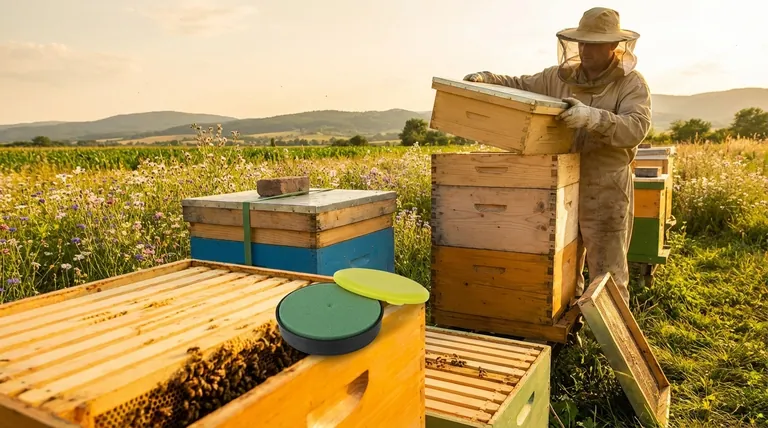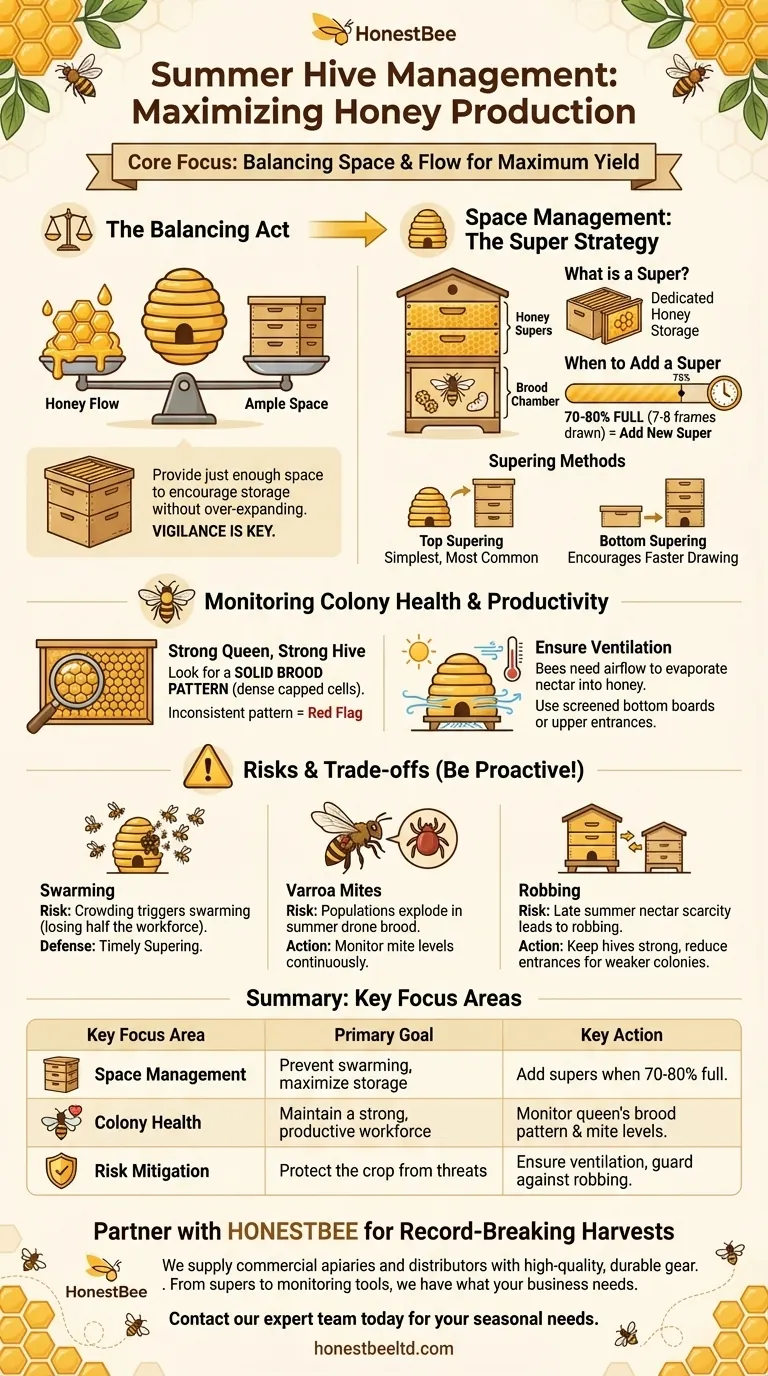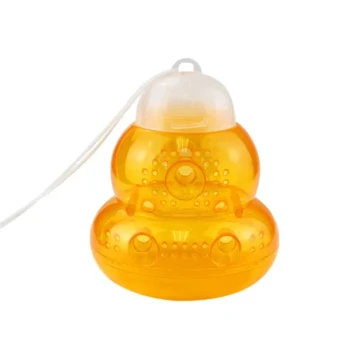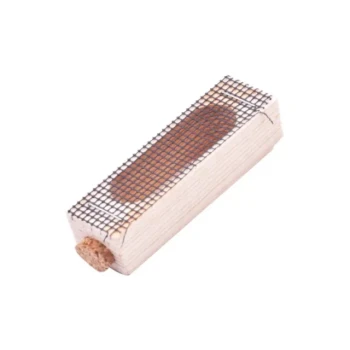In summer, the core focus of hive management pivots entirely to maximizing honey production. Your primary task is to provide the colony with ample space to store the incoming nectar from the main summer nectar flow. This ensures the bees don't run out of room, which could trigger a swarm or halt production.
Summer beekeeping is a balancing act. The goal is to provide just enough space to encourage honey storage without giving the colony so much room that they can't effectively defend it, all while vigilantly monitoring for issues that could undermine the harvest.

Maximizing Space for the Honey Flow
The single most important job during summer is managing the physical space within the hive. A colony that feels crowded will stop foraging and may begin preparations to swarm, which would devastate your honey crop.
The Role of Honey Supers
A super is simply a box filled with frames that you add to the top of the hive. These boxes are dedicated exclusively to honey storage, separate from the brood chamber below where the queen lays her eggs and the colony raises young bees.
By adding supers, you provide the empty comb or foundation that worker bees need to deposit and cure nectar into honey.
When to Add a New Super
Timing is critical. Adding a super too early can give the bees too much space to heat, cool, and defend. Adding one too late can result in a "honey bound" brood nest and trigger swarming.
A reliable rule of thumb is to add a new super when the most recently added one is 70-80% full. This typically means 7 or 8 of the 10 frames are drawn out and being actively filled with nectar.
Top vs. Bottom Supering
There are two primary methods for adding new supers:
- Top Supering: The new, empty super is placed on the very top of the hive. This is the simplest and most common method.
- Bottom Supering: The new super is placed directly on top of the brood boxes, underneath the already partially filled supers. This can encourage bees to draw out the new foundation more quickly.
Monitoring Colony Health and Productivity
A massive honey crop is only possible with a massive, healthy workforce. Summer inspections, while less frequent, are focused on verifying the colony has what it needs to succeed.
The Importance of a Strong Queen
Your queen is the engine of the colony. During a quick summer inspection, you don't need to see her, but you must see her work. Look for frames with a solid, compact brood pattern—a dense area of capped cells with very few empty spots.
A spotty, inconsistent pattern can indicate a failing queen, disease, or pest issues that must be addressed.
Ensuring Adequate Ventilation
Hives can easily overheat in the summer sun. This forces bees to spend energy cooling the hive instead of foraging. More importantly, bees need to evaporate water from nectar to turn it into honey, a process that requires significant airflow.
Consider using a screened bottom board, an upper entrance, or propping the outer cover open slightly to increase ventilation during hot, humid weather.
Understanding the Trade-offs and Risks
Summer management is not without its challenges. Being aware of the potential pitfalls allows you to act proactively to protect your bees and your honey harvest.
The Lingering Risk of Swarming
While primarily a spring phenomenon, swarming can still occur in summer if the colony becomes intensely crowded. Proper and timely supering is your best defense against losing half your workforce just as the main honey flow begins.
The Threat of Varroa Mites
Summer is when Varroa mite populations can explode. The abundance of drone brood, the mite's preferred nursery, allows their numbers to multiply exponentially.
While treatment is typically reserved for after the honey supers are removed, you must monitor mite levels throughout the summer. A high mite load will weaken the colony, reduce honey production, and compromise the bees that are meant to survive the winter.
The Danger of Robbing
As the nectar flow tapers off in late summer, the risk of robbing increases. Stronger hives may try to steal honey from weaker neighboring hives. Always keep your hives strong and reduce entrance openings for weaker colonies to help them defend their resources.
Making the Right Choice for Your Goal
Your summer strategy should align with your specific beekeeping objectives.
- If your primary focus is maximizing honey yield: Be aggressive with supering to stay ahead of the nectar flow and ensure the queen has a strong, uninterrupted brood nest.
- If your primary focus is colony health and long-term sustainability: Prioritize regular Varroa mite counts and be prepared to pull honey supers early if a treatment is necessary to save the colony.
- If you are managing a new or weaker colony: Be conservative with adding space to avoid stressing the bees, and focus your efforts on building their population and strength before expecting a large honey crop.
By proactively managing space and monitoring for risks, you empower your colony to perform its best work during the most productive season of the year.
Summary Table:
| Key Focus Area | Primary Goal | Key Action |
|---|---|---|
| Space Management | Prevent swarming & maximize honey storage | Add supers when 70-80% full |
| Colony Health | Maintain a strong, productive workforce | Monitor queen's brood pattern & mite levels |
| Risk Mitigation | Protect the honey crop from threats | Ensure ventilation & guard against robbing |
Ready to equip your apiary for a record-breaking summer harvest?
At HONESTBEE, we supply commercial apiaries and beekeeping equipment distributors with the high-quality, durable supplies needed for successful hive management. From honey supers and frames to mite monitoring tools and ventilation equipment, our wholesale-focused operations ensure you get the reliable gear your business depends on.
Let's discuss your seasonal needs. Contact our expert team today to get the right equipment for maximizing your honey production.
Visual Guide

Related Products
- Adjustable Formic and Acetic Acid Dispenser for Bee Mite Treatment
- Professional Galvanized Hive Strap with Secure Locking Buckle for Beekeeping
- Professional Grade Foldable Beehive Handles
- Professional Bamboo Queen Isolation Cage
- Black Plastic Beetle Barn Hive Beetle Trap for Beehives
People Also Ask
- How can beekeepers ensure their hives survive the winter? A Guide to Colony Survival
- How do Varroa mites spread between honey bee colonies? Stop Mite Transmission in Your Apiary
- What is the optimal time for varroa mite control in nucs? Maximize Efficacy with Perfect Timing
- What are some common predators and pests that target beehives? Protect Your Hives from Bears, Mites, and Beetles
- What does Chewed Down Brood (CDB) indicate in bee colonies? A Sign of Varroa Mite Infestation



















